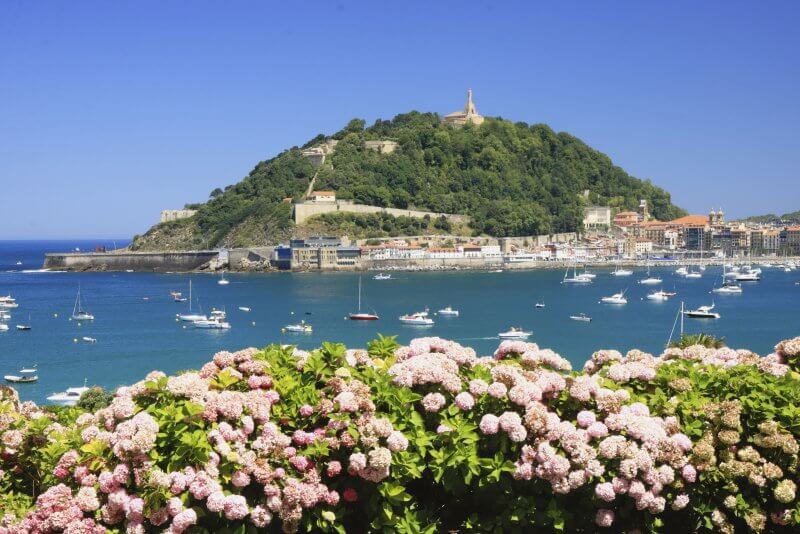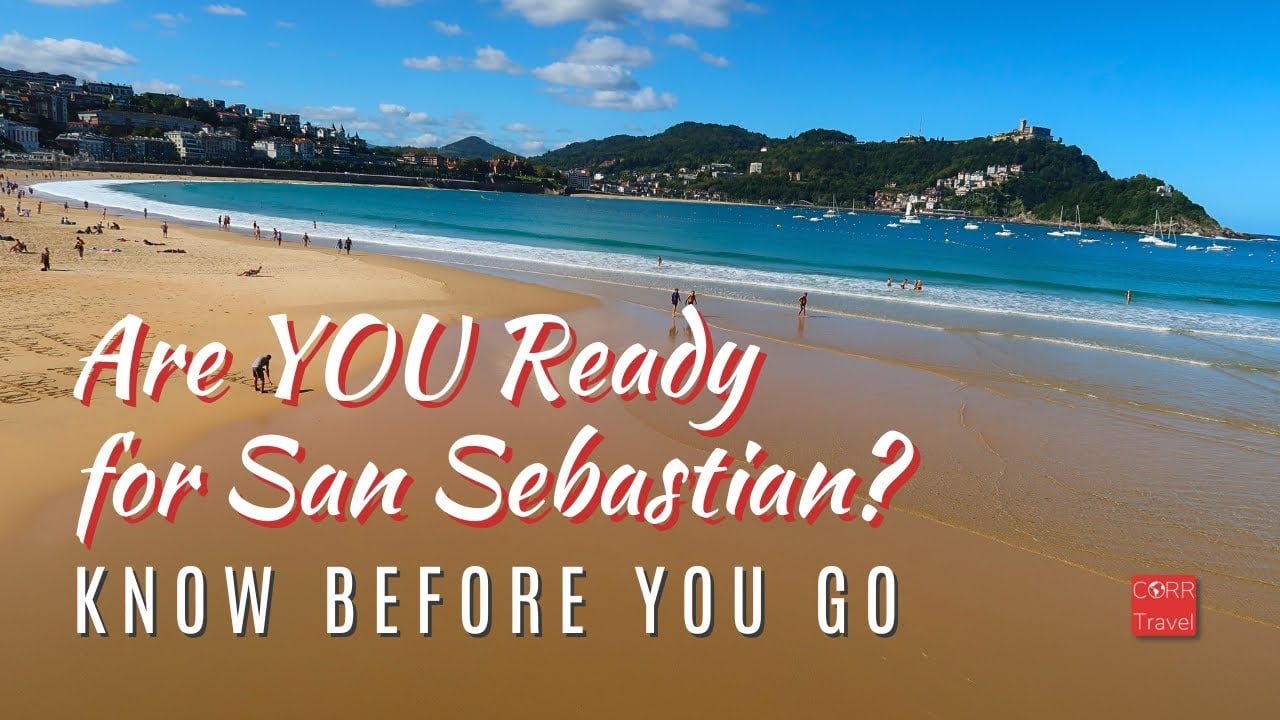San Sebastian (Spain) is a famous resort on the Atlantic coast, in the Bay of Biscay. To be more precise, it is located in the northern part of Spain, in the mountainous Basque Country, at a distance of 473 km from Madrid and only 20 km from the border with France.
This city of 183,000 people has two official names-San Sebastian and Donostia-San Sebastian, but it is often referred to simply as Sanse, Donostha or Donostia.
San Sebastian is recognized as the most beautiful city in Spain, with its layout and architecture it strongly resembles Paris. At the same time, it is quite uniform in style, with 5-6-storey buildings. Sanse received its modern appearance in the Art Nouveau era, and all later buildings simply adapted to the already set style.
Aristocratic and cozy San Sebastian has everything you need for a good holiday. It conquers with its developed infrastructure, luxurious beaches, high waves for surfing, interesting sights, one of the best thalassotherapy centers in La Perla, very tasty food.
Interesting forfeit! It should be noted that this is a very expensive resort, even Cannes and Nice lag behind in prices.
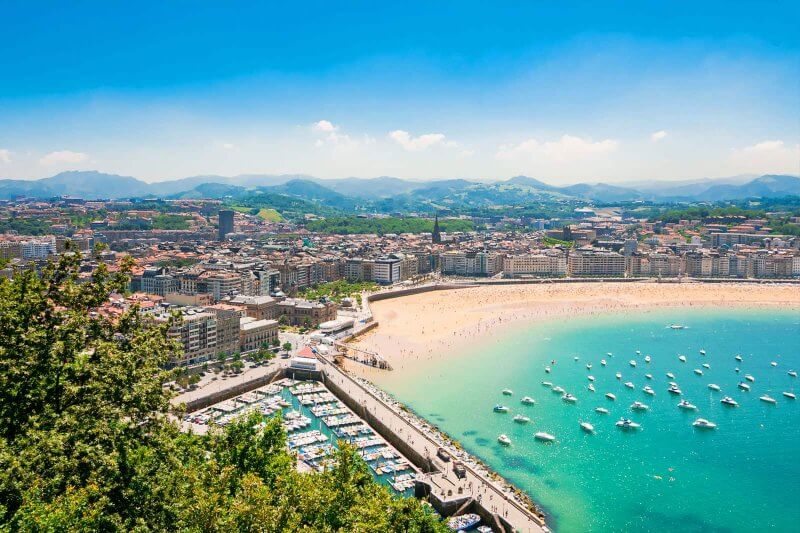
Beaches
Even in the photo of San Sebastian (Spain), you can see that the coastline of this resort is periodically interrupted by picturesque rock formations. The rocks divide the sandy coastal zone into several seashell-like beaches.
All beaches are equipped with toilets and changing rooms, sun beds with umbrellas are available for rent, there are many cafes nearby.
Playa de La-Concha
Located near the city center, La Concha beach (which means “shell”) is not only the most visited in this resort, but also the most popular on the entire Atlantic coast of Spain. In addition, it is also very photogenic: a picturesque bay closed on both sides by hills, an island right in its center and a promenade equipped for walking.
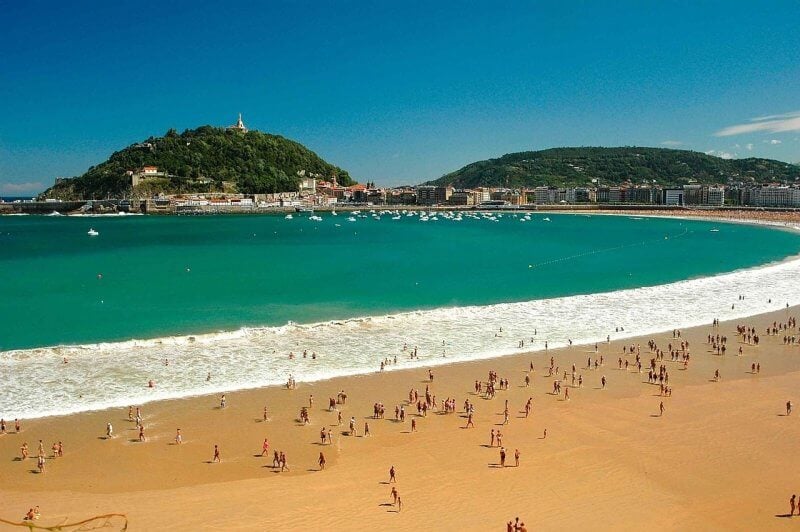
La Concha is 1,450 m long, with an average width of about 40 m. There are almost no waves on this beach, so you can not only sunbathe, but also make calm swims. In high season, La Concha is usually crowded, and finding an empty seat becomes a challenge.
Playa de Ondarretta
A slightly less prestigious, and therefore less busy and noisy beach Ondarretta, is located near Mount Igueldo. It is separated from La Concha by a mountain, in which a tunnel is made for comfortable movement between the beaches.
Ondarretta is small, up to 600 meters in length, also almost without waves, and is very popular with families with children.
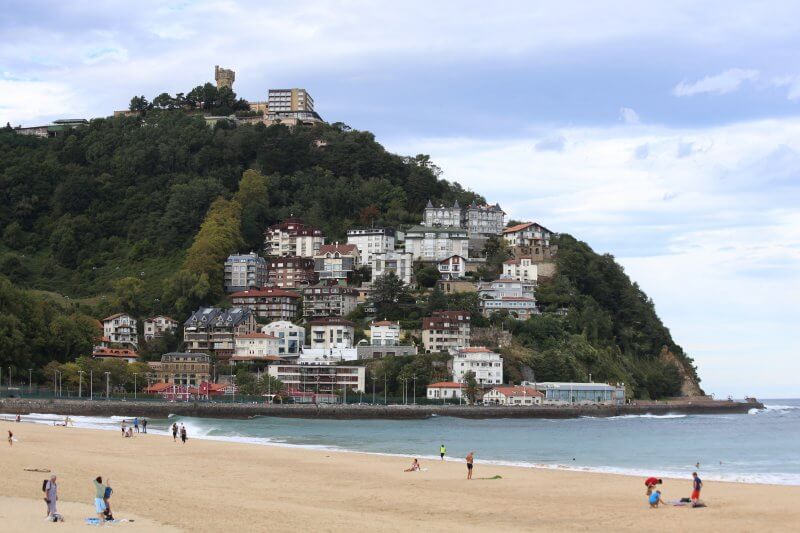
There are many small hotels near Ondarretta beach, and it is on its outskirts that the original sculptural installation “Crest of the Wind” is placed, recognized as one of the attractions of San Sebastian.
Playa de Zurriola
The 850-meter-long Surriola beach is located on the eastern bank of the Urumea River, close to the sea bay, and is windswept. Because of the constant strong waves, it is dangerous to swim on this beach, but it is very suitable for surfing. There are surf schools on Playa Zurriola, there are points for renting sports equipment, volleyball courts are equipped, and lifeguards are working.
There are a lot of bars here, and festivals and concert performances are often organized on the territory.
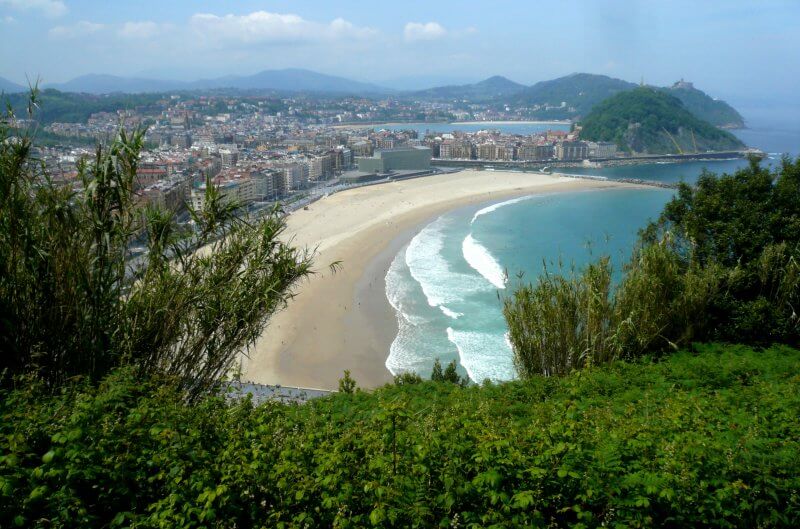
Resort attractions
In San Sebastian, as in all of Spain, there is a lot to see – although there are not very many attractions, they deserve to take the time to explore them.
This is interesting! San Sebastian is the world’s leading city for the number of Michelin stars per square meter. There are 16 Michelin-starred restaurants waiting for connoisseurs of haute cuisine in this resort, and gastronomy is recognized as one of the most valuable attractions here.
Old Town
San Sebastian’s historic district, Parte vieja, is bounded by Mount Urgul, the Urumea River and La Concha Bay.
San Sebastian was founded in the 12th century, but in 1813 it was almost completely destroyed by fires and Anglo-Portuguese troops. As a result, the architecture of Parte Vieja dates back only to the 19th century.
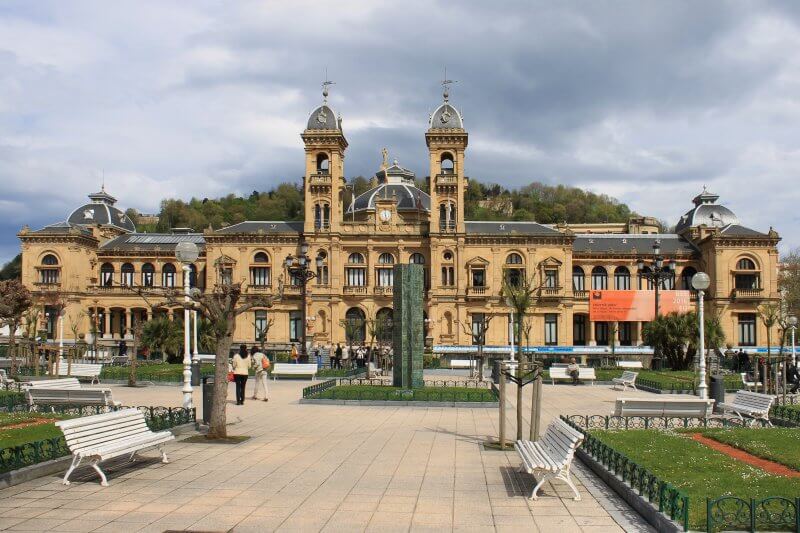
The historical part consists of stone-paved, narrow and well-planned pedestrian streets, where beautiful houses with flowers on their balconies are located. The labyrinths of these streets end in Constitution Square – a square space where all city festivals and fairs take place.
Perhaps the main attraction of the Old Town is not the architecture, but a series of endless tapas and pintxos bars. Most tourists walking around Parte Vieja are not looking for museums and monuments, but for places where you can order cold Basque beer and various tapas (snacks).
Basilica of the Blessed Virgin Mary
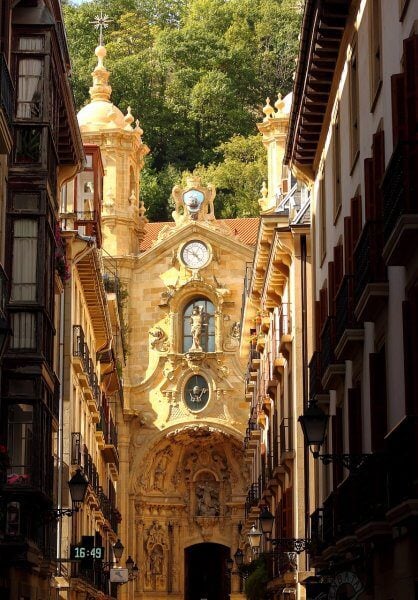
Basilica of Santa Maria del Coro (XVIII century) – one of the main attractions and architectural decoration of San Sebastian. The shrine, whose facade is decorated with stucco and carved decor, is a vivid example of the Baroque style. Above the central entrance is a majestic sculpture of the city’s patron saint, Saint Sebastian.
The interior of the basilica impresses with a special atmosphere of peace and luxurious decoration. The interior features elements of neoclassical and Gothic styles, with images of the Virgin Mary and Saint Sebastian placed on the central altar. There is also an icon with Old Slavonic inscriptions in this church-the servants say that it was put up at the request of natives of Ukraine living nearby. The basilica also houses several works of art, in particular, the painting of El Greco.
- The Basilica of Santa Maria del Coro is located in the center of the Old Town, next to the southern slope of Mount Urgul. Exact address of the place of interest: Calle 31 de Agosto, 46-20003 Donostia, San Sebastián, Spain.
- The temple is open every day and can be visited from 10: 15 to 13: 15 and from 16: 45 to 19: 45. Entrance fee for tourists is 2 €.
San Telmo Museum
The San Telmo Museum is dedicated to everything related to the history of the Basque Country. The exhibition halls feature historical, artistic, and archaeological exhibits. Here you can see household items and clothing, paintings by famous Spanish painters, frescoes based on Basque legends. Among the most significant attractions are 11 frescoes by Jose Maria Certa.
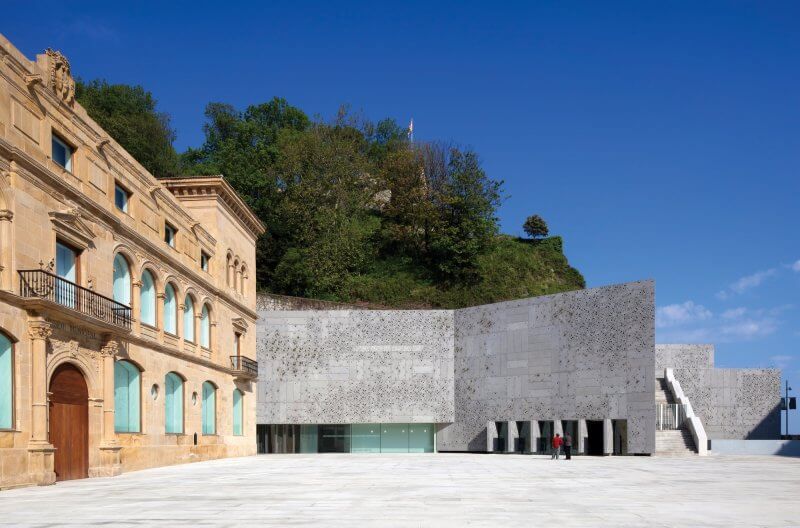
Permanent exhibitions are located in the restored building of a medieval Dominican monastery. Nearby there is another completed building that fits seamlessly into the rocky panorama of Urgul-there are ticket offices, a restaurant, and temporary exhibitions.
- Museum address: Plaza Zuloaga 1, 20003 Donostia, San Sebastian, SS, Spain.
- The attraction is open to visitors on Tuesday-Sunday from 10: 00 to 20: 00.
- The full ticket price is 6 €.
Aquarium
A very interesting attraction of San Sebastian is the first Aquarium in Spain and the Museum of Oceanography, which are located in the building of the Palace of the Sea.
Interesting fact! The aquarium has been around since 1928 and is the most popular tourist attraction in the Basque Country, with around 300,000 visitors each year.
The aquarium consists of 3 parts:
- An oceanarium (swimming pool) of 480 m2 with a glass underwater tunnel that provides a 360°panoramic view. The aquarium is home to various representatives of the underwater world: stingrays and sharks swim slowly, colorful anemones and other small fish frolic, small jellyfish shine like electric bulbs.
- Zones with themed aquariums featuring a variety of underwater flora and fauna from all over the world.
- “Tactile” aquariums – they are notable for the fact that you can touch the sea urchins, stars and other inhabitants living there.
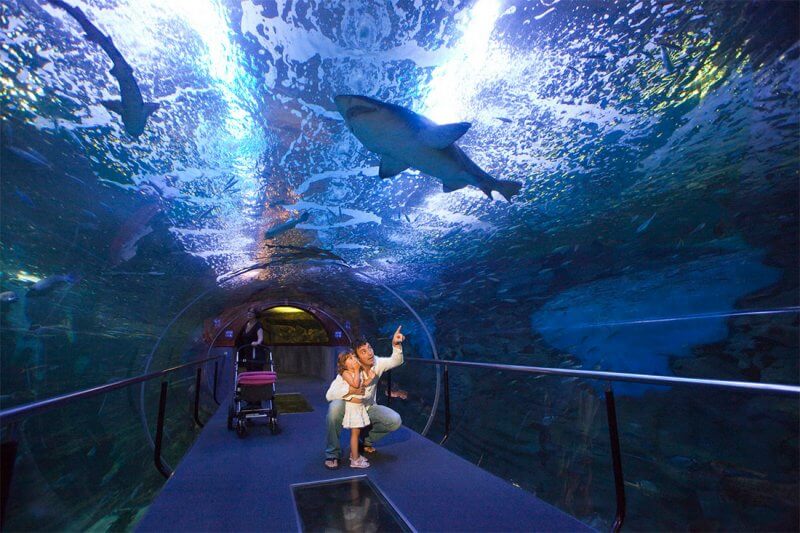
The Palace of the Sea stands in the historic quarter of San Sebastian, at the end of the promenade. Exact address: Plaza de Carlos Blasco Imaz, 1, 20003 Donostia, San Sebastian, Spain.
The attraction is available for viewing at this time:
- from October 1 to Easter: from 10: 00 to 19: 00;
- from Easter to the end of June: from 10: 00 to 20: 00;
- in July-August: from 10: 00 to 21: 00.
Tickets for adults cost 13 €, for children 4-12 years-65 €. You can get an audio guide for 2€.
Useful to know! At 12:00 on Tuesdays, Thursdays and Saturdays, divers can be seen feeding sharks and other aquarium inhabitants.
Mount Urgul
Monte Urgull, which rises to a height of no more than 100 m, simultaneously acts as both a natural and historical attraction.
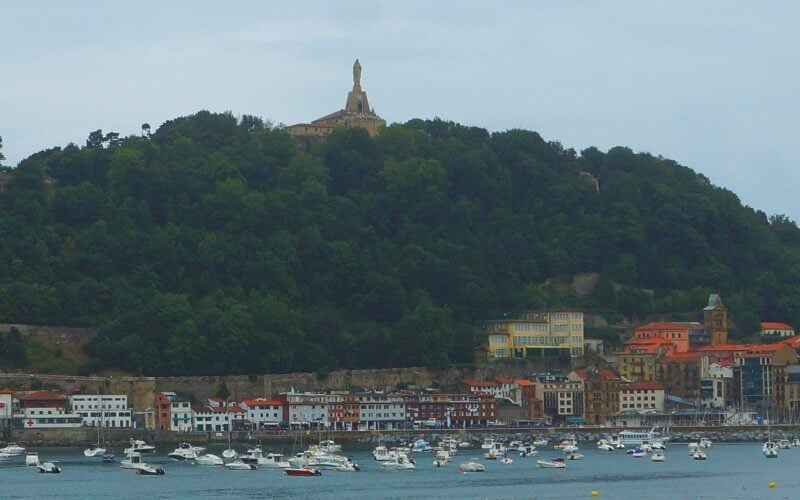
At the beginning of the twentieth century, a park was created on the territory of Urgul, where locals and guests of the city like to relax. The slopes and summit are covered with lush green vegetation, among which many paths are laid, comfortable benches are installed, and an observation deck is equipped.
On the top of Monte Urgull there are several historical attractions, one of which is the remains of the Castillo de La Mota defensive castle, built in the XII century. In the dilapidated fortress there is a small historical museum of history, admission to it is free.
At the time when the park was created, a grandiose 12-meter statue of Christ “Sacred Heart”was installed on the roof of the fortress. Christ seems to hover over the city, protecting it from harm and blessing all the inhabitants.
Mount Urgul is located in the very center of San Sebastian, right at its foot is the Old Town. You can climb to the top along a serpentine path or along a beautifully designed alley that originates in the historical center, on Marie Street.
Mount Higueldo
At the top of Igueldo (Igeldo) there is a viewing platform from which you can see the magnificent beaches, the bay with the island and other attractions of San Sebastian, which attract many tourists to this resort.
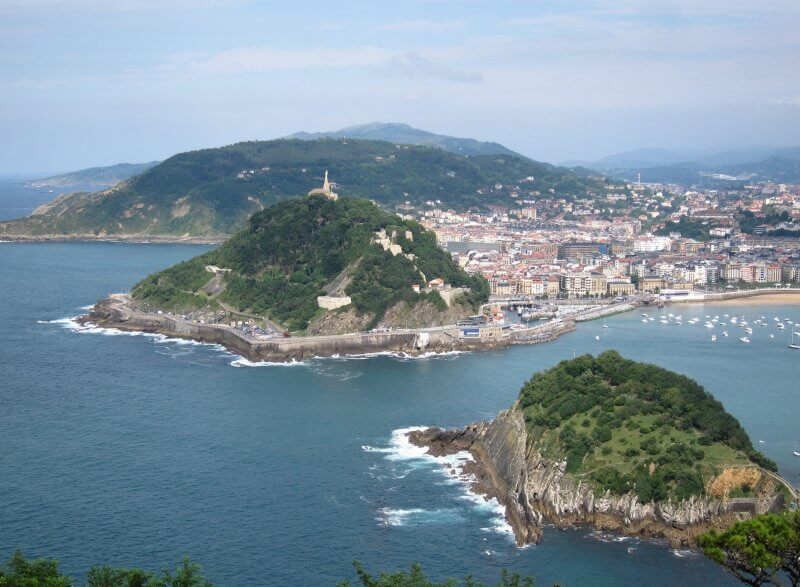
Monte Igueldo is also known for its Amusement Park, which was organized back in 1925. At the top of the mountain stands an ancient lighthouse-museum, and near it there are various attractions.
You can reach the summit of Monte Igueldo on foot, by car or by bus. You can also get there by funicular, the station of which is located on the square known as “Funicular Square”. By the way, the funicular itself can be considered a local attraction, since it is the oldest in the Basque Country.
The opening hours of the funicular, observation deck, lighthouse museum, and amusement rides in the park vary depending on the season, day of the week, and weather. On the site monteigueldo.es there is always information about what and when is available for viewing on Mount Higueldo on a specific date. The current prices are always indicated there.
Installation “Crest of the Winds”
The original Peine del Viento installation was created by the famous Spanish sculptor E. Childe in 1977. This attraction is built into huge boulders three rusty metal structures weighing 10 tons each. On the boulders and metal hulks themselves, the sea waves hit and break with a noise.
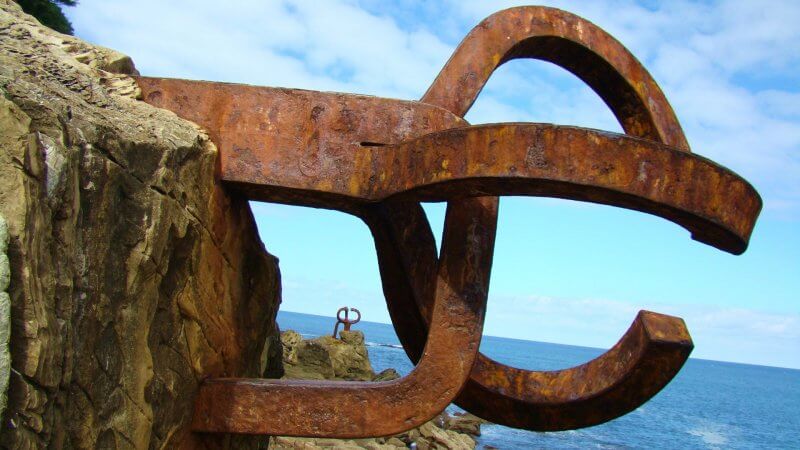
The sculptural composition is designed to remind people that nothing man-made can withstand the forces of nature for a long time.
Although for a sophisticated tourist, this installation can not be considered a serious attraction, many people take photos against its background in memory of the city of San Sebastian in Spain.
“Crest of the Winds” is located on the outskirts of Ondaretta Bay, quite far from the historical quarter.
When is the best time to visit the resort

The climate conditions in the Basque Country are significantly different from those in other regions of Spain: it’s much more windy and rainy there.
Go to the city of San Sebastian in Spain is best in the period from May to October, but the best time for a beach pastime is considered to be July, August and September. During the high season, the weather here is very pleasant-the temperature is +24.5°C, and there are few rainy days-no more than 3 per month. The water temperature in the sea during this period is kept at +21.5…+23°C, and the highest temperature usually occurs from mid-June to the end of the first decade of September.
But it is during the high season, as in all resorts in Spain, that there is the greatest concentration of tourists and the highest prices.
Useful to know! During the peak season, the resort hosts many festivals, in particular, in September-an International Film Festival with the participation of world-class celebrities.
During the low season, San Sebastian seems to fall asleep, and there are no crowds at all. Indeed, the weather is not conducive to relaxing by the sea: the sky is almost overcast, the average air temperature is about +10…+12.8°C, and the water in the sea is +12°C. In October, high tidal waves are often observed: very strong and high Mareas Vivas. The most unfortunate month for traveling can be called November, when it rains for about 10 days.
How to get to San Sebastian
How to get to San Sebastian? This question interests many tourists, so now we will briefly consider several possible options.
Plane
There is a small airport 15 km from the center of San Sebastian. Every day it receives planes from Barcelona and the main city of the country Madrid, there are no direct flights from other countries at all. Several regular buses depart directly to the city center from here-they stop at the very exit from the airport. Travel by bus will cost 2.5 €, by taxi-up to 10 €.
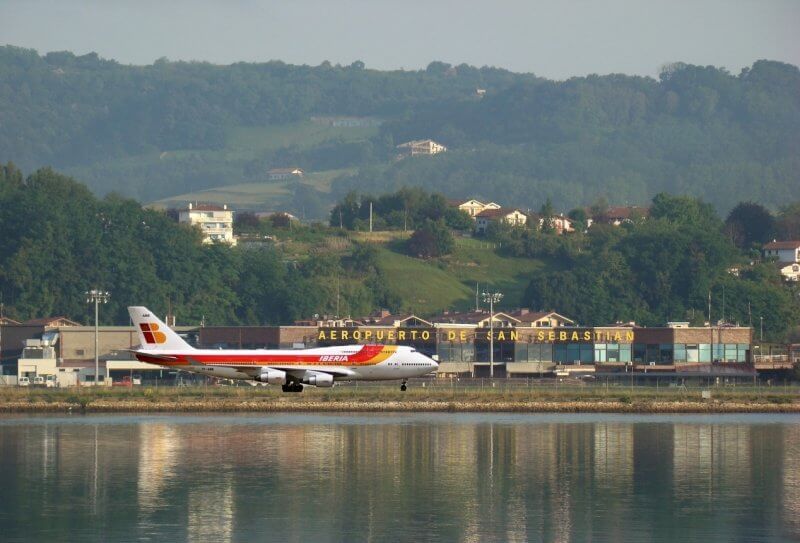
A more convenient option is to land at Bilbao and Biarritz airports. Bilbao is located in Spain, at a distance of 102 km, and Biarritz is in France, but it is much closer, only 40 km from San Sebastian. These airports accept many different flights from other countries, and there is no need to make an additional transfer. Regular buses stop at Bilbao and Biarritz airports for the San Sebastian Central Bus Station at Plaza de Pío XII. From Bilbao, a bus ride will cost almost 17 €, from Biarritz-7 €.
Train
San Sebastian is connected by rail to almost all major localities in Spain and France. For example, you can drive from Barcelona in 5 hours and 45 €.
Long-distance trains arrive at the main railway station of San Sebastian-Estación del Norte. But this resort also has another train station, Amara, where commuter trains arrive – this is where trains from the French border town of Hendaye arrive. Estación del Norte and Amara are located close to the center of San Sebastian.
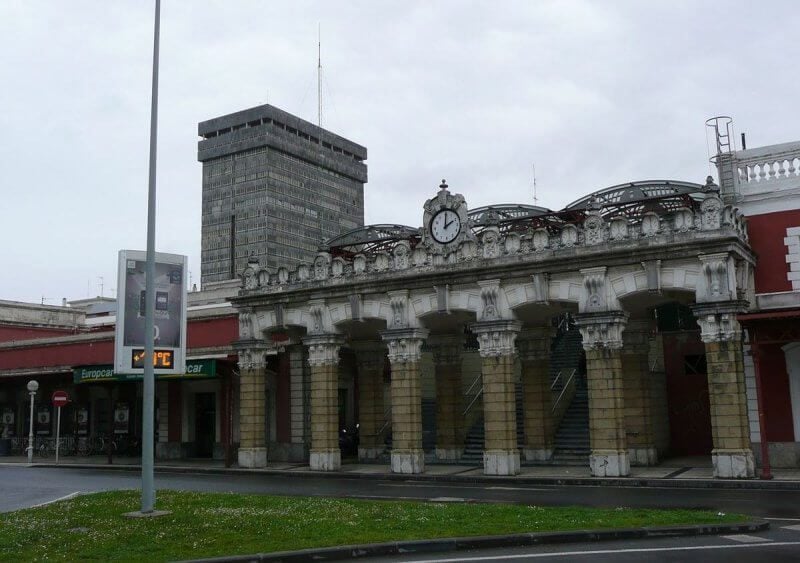
Bus
ALSA and PESA buses run to San Sebastian from nearby cities in France and Spain. Tickets are sold on the websites of carriers (there is also an exact schedule there) and at the ticket offices of bus stations. Buses arrive in San Sebastian (Spain) at Plaza de Pío XII, where the city’s main bus station is located.

